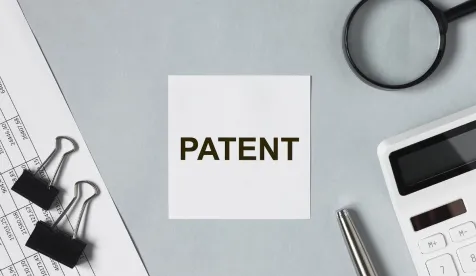The US Court of Appeals for the Federal Circuit affirmed the Patent Trial & Appeal Board’s (Board) finding that proposed amendments made during an inter partes review (IPR) are valid and proper despite the inclusion of changes not related to patentability issues raised in the petition. Nat’l Mfg., Inc. v. Sleep No. Corp., Case No. 21-1321 (Fed. Cir. Nov. 14, 2022) (Stoll, Schall, Cunningham, JJ.)
We’ve likely all seen the commercials promising a proven quality of sleep. Sleep Number is the owner of numerous patents, including several directed to methods for adjusting “the pressure in an air mattress ‘in less time and with greater accuracy’ than previously known.” The patents state this is achieved by taking pressure measurements at the valve enclosure and applying a pressure adjustment factor that is iteratively revised using an “adjustment factor error.” The patent states that this method allows for monitoring the pressure of the air mattress without the need to turn off the pumps.
American National Manufacturing challenged the validity of the patents in an IPR proceeding, claiming that most were rendered obvious by the prior art of Gifft in view of Mittal and Pillsbury and that six of the dependent claims requiring a “multiplicative pressure adjustment factor” would have been obvious in further view of Ebel. Gifft disclosed an air-bed system using valve assembly pressure to approximate the air chamber pressure and Mittal and Pillsbury both disclosed using additive offsets to improve accuracy. Ebel disclosed using both additive and multiplicative components to accurately measure the actual pressure in an inflating or deflating air bag.
The Board agreed with American National that it would have been obvious to combine Gifft, Mittal and Pillsbury and that the resulting combination rendered most of the claims obvious, but it also noted that the combination failed to show that a “skilled artisan would have applied Ebel’s multiplicative factors” to the prior art. However, in each proceeding Sleep Number filed a motion to amend the claims contingent on a finding that the challenged claims were unpatentable. The proposed claims included the “multiplicative pressure adjustment factor” that the Board had determined was not unpatentable along with other non-substantive changes.
American National took issue with these amendments, arguing they were legally inappropriate, non-enabled because of an error in the specification and lacked written description support. The Board disagreed. American National appealed. Sleep Number cross-appealed the Board’s finding of obviousness.
The Federal Circuit found that the proposed amendments were not improper even though some of the changes were non-substantive changes to address consistency issues. The Court pointed out that “once a proposed claim includes amendments to address a prior art ground in the trial, a patent owner also may include additional limitations to address potential § 101 or § 112 issues, if necessary.” The Court rejected American National’s argument that permitting such amendments creates an “asymmetrical” and “unfair” proceeding “by allowing the patent owner and the Board to address concerns that may be proper for [an] examination or reexamination proceeding, but that were never germane to an IPR process.” The Court pointed out that a petitioner is free to “challenge the proposed amended claims on grounds beyond §§ 102 and 103, including under § 112.”—the very thing that American National did in this case.
The Federal Circuit also rejected American National’s arguments that the proposed amendments were invalid because they injected inventorship issues and were not enabled. The Court pointed out that the proposed amendments recited well-known structures, which the case law made clear does not introduce inventorship issues. Further, the error American National relied on to support their non-enabled ground was clearly a typographical error that would be “easily detectable by anyone who was skilled in the art” and sufficiently supported by the rest of the specification.
Finally, the Federal Circuit addressed Sleep Number’s cross-appeal. The Court first found that substantial evidence supported the Board’s determination that a skilled artisan would have been motivated to combine the Gifft, Mittal and Pillsbury references despite the fact that the equations used in Mittal and Pillsbury were not a perfect fit for Gifft. The Court then addressed Sleep Number’s argument that the Board improperly placed the burden of persuasion for non-obviousness on Sleep Number. The Court found that the Board properly analyzed the issue and only after “setting forth its fact findings and reasoning for why it concluded that the claims would have been obvious” did it address Sleep Number’s specific arguments.




 />i
/>i

